Green Marine were contracted by SIMEC Atlantis to carry out the decommissioning of their AR1000 test site in the Orkney Islands. This included the recovery of subsea cable and recovery of the turbine support structure (TSS) and ballast.
The first operation was to recovery 250m of cable, carry out the splice of a test head and re-laying of the site export cable. The engineering team developed lay tables Lay tables for both the recovery and redeployment of cables were established. This ensured that both vessel movements and cable pay-in were controlled, ensuring both static & dynamic cable tensions are kept within the properties of cable (SWL).
Creation of lay tables was conducted using catenary equations and Orcaflex simulations for dynamic checks. Alongside the laytables, the engineering team created mooring plans to ensure that the vessel could maintain station at key points through out the operation.
As part of the cable operations a test head was recovered to the vessel and removed. 250m of cable were then recovered to the deck, cut and a second test head was spliced on. This involved the vessel maintaining station in a tidal area for over 24hrs. The below images shows the deployment of the second test head.
Following the successful cable operation, the team moved on to recover the device ballast blocks. There were 6 ballast blocks situated on top of the turbine support structure (TSS) each of which were 175te or 205te. The engineering team decided to develop a lift frame to assist with the recovery of the blocks without requiring divers or ROVs on the tidal site. The frame was designed using a combination of hand calculations and non-linear FEA in Abaqus. The below images show some of the FEA analysis and results.
The lift frame was designed to allow remote docking controlled and monitored from the surface on board the recovery vessel via cameras and hydraulics. Specialist hydraulic equipment was designed to ensure the frame was compatible with various in the ballast blocks. The cameras were set up to provide contingency in the event of a single camera failure.
In addition to designing the frame for recovery, the engineering team coconducted mooring analyses for the GM700 in Orcaflex. These were carried out to ensure that the GM700 maintains station under the various combined environmental conditions. Orcaflex is the world’s most advanced analysis package for the assessment of marine structures and line systems. A range of loadcases were analysed covering variations in; GM700 loading condition, water depth, mooring radius, anchor mass, tidal flow speed, wave spectrum, environmental directionality & co-linearity. Green Marine applied these to the conditions expected on site. The below images depict a number of screen shots from various stages of the hydrodynamic & mooring assessments.
Following production of the project documentation including GM700 mooring plans and transportation analysis, the barge operations commenced. The barge was moored on site and the lift frame was successfully utilised to recover each mooring block and move them offsite.
Once the ballast blocks were recovered the lift frame was reconfigured to recover the TSS. A second lift and transportation analysis was undertaken to detail rigging requirements and limits for this operation. The TSS was successfully recovered on the first attempt and transported to a storage area.
The recovery operations were conducted using only Green Marine vessels and equipment, without the requirement of third-party dive teams or ROV. As well as eliminating the cost of these third party’s it also sped up the operations as there were no delays due to sub-contractor availability / short notification of weather windows.









